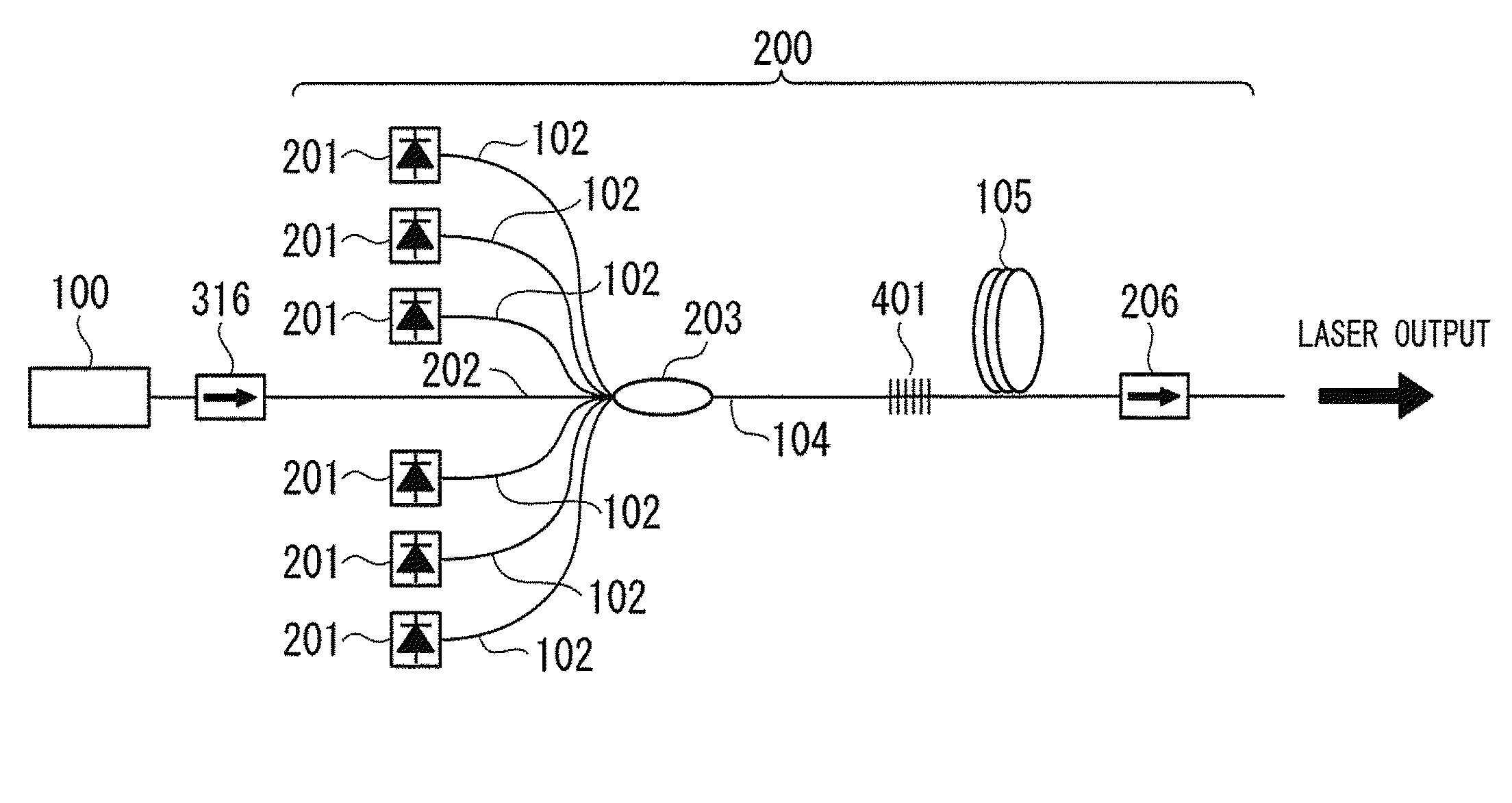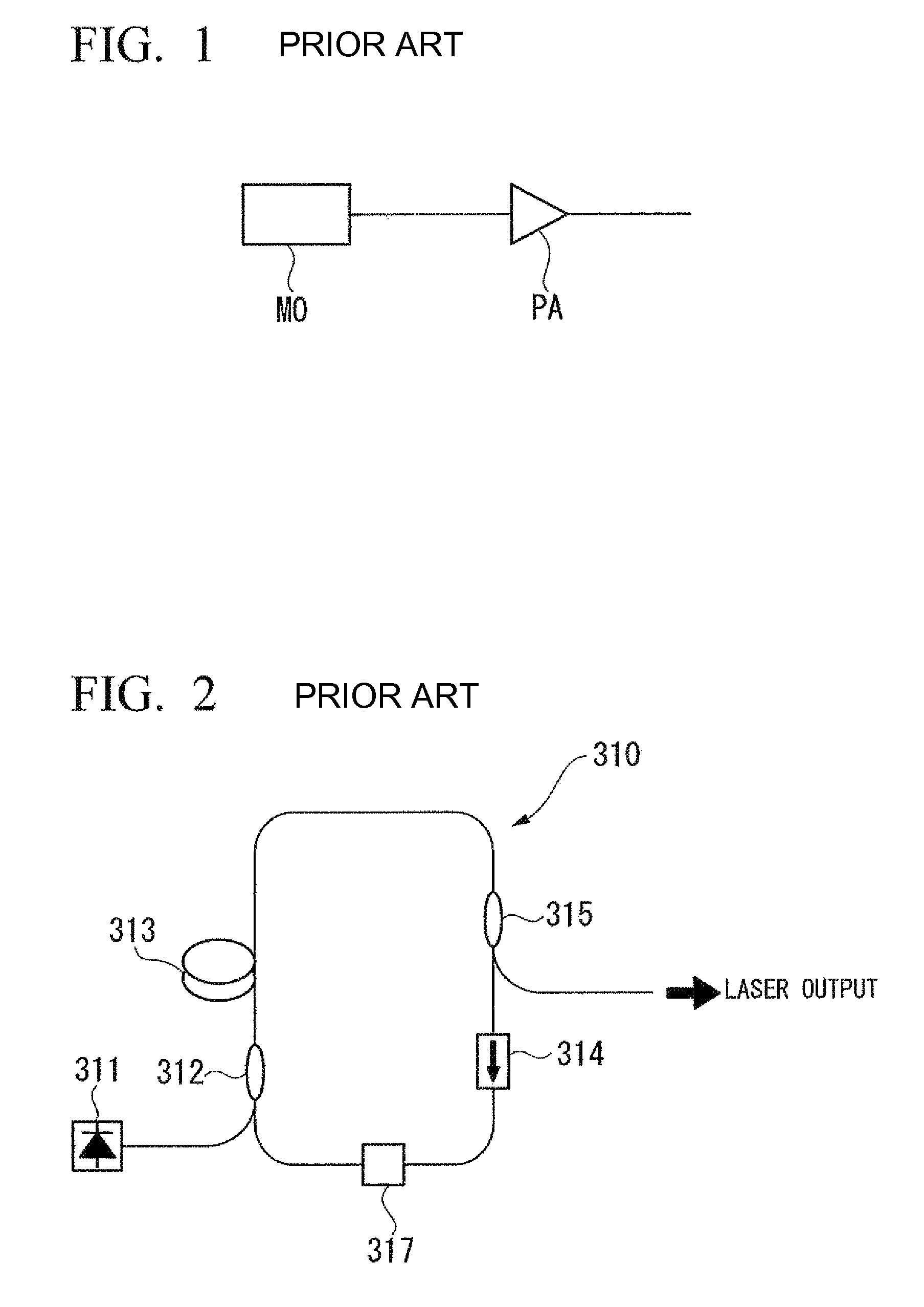Fiber laser
a fiber laser and fiber technology, applied in the field of fiber lasers, can solve the problems of reducing reducing the efficiency of fiber lasers, and increasing the risk of damage thereon, so as to improve the reliability, prevent efficiency degradation, and improve the reliability of fiber lasers
- Summary
- Abstract
- Description
- Claims
- Application Information
AI Technical Summary
Benefits of technology
Problems solved by technology
Method used
Image
Examples
example
[0071]The known MOPA type fiber laser shown in FIG. 3 (hereinafter, referred to as a comparative example) and the fiber laser shown in FIG. 4 as the embodiment of the present invention were produced by way of experimentation.
[0072]In both the comparative example and the embodiment, a fiber ring laser with an oscillation wavelength of 1064 nm is used as the MO 100.
[0073]As the rare earth-doped double-clad fiber 105, an Yb-doped double-clad fiber is used, of which the diameter of the core is 20 μm, the diameter of a first clad is 400 μm, and the absorption of the core is 1200 dB / m @976 nm.
[0074]As the photocoupler 203, a coupler which has an emission port of which the diameter of the core is 20 μm, and the diameter of the clad is 390 μm is used, in order to reduce the connection loss of the pump light between the photocoupler 203 and the rare earth-doped double-clad fiber 105. Pumping ports are connected to the pump light source. The incident port is composed of six pumping ports 102 ...
PUM
 Login to View More
Login to View More Abstract
Description
Claims
Application Information
 Login to View More
Login to View More - R&D
- Intellectual Property
- Life Sciences
- Materials
- Tech Scout
- Unparalleled Data Quality
- Higher Quality Content
- 60% Fewer Hallucinations
Browse by: Latest US Patents, China's latest patents, Technical Efficacy Thesaurus, Application Domain, Technology Topic, Popular Technical Reports.
© 2025 PatSnap. All rights reserved.Legal|Privacy policy|Modern Slavery Act Transparency Statement|Sitemap|About US| Contact US: help@patsnap.com



